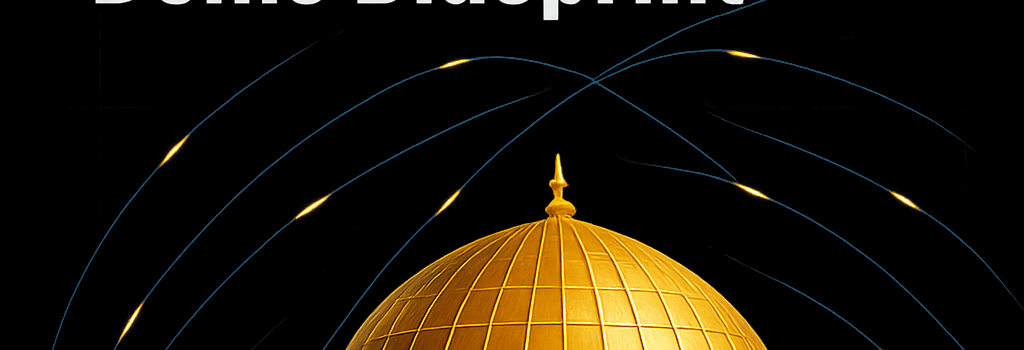Trump’s Missile Shield: The Golden Dome Blueprint

On July 23, 2025, Gen. Michael Guetlein assumed leadership of the Pentagon’s Golden Dome for America program, an unprecedented $175 billion effort to deploy a layered missile defense shield over the entire United States within three years. Tasked by President Donald Trump’s January executive order, Golden Dome must fuse existing systems, innovate space-based interceptors, and demonstrate incremental wins every six months to meet a tight 2028 deadline.
Origins and Presidential Mandate
President Trump’s January executive order directed the Department of Defense to build a “layered missile defense shield” capable of defeating ballistic, hypersonic, cruise missiles, drones, and other next-generation aerial threats. Initially dubbed “Iron Dome for America,” the initiative was rebranded Golden Dome to reflect its broader coverage—protecting an area 100 times larger than Israel’s New Jersey–sized domain.
“We’ve got to exploit anything and everything we’ve possibly got,” Guetlein told reporters on his second day, echoing Space Force policy to “exploit what we have, buy what we can, and build what we must.”
Core Components and Technical Architecture
Golden Dome is designed as a system of systems. It leverages:
- Ground-Based Radars: AN/TPY-2 X-band radars for high-resolution tracking, Sea-Based X-Band Radar (SBX) for midcourse discrimination, and new lower-frequency VHF radars for over-the-horizon detection.
- Space-Based Sensors: SDA’s Tranche 0 prototype optical/infrared (OPIR) satellites launched in 2023, SBIRS geosynchronous satellites, and planned Hypersonic and Ballistic Tracking Space Sensor (HBTSS) constellations for boost- and midcourse-phase targeting.
- Interceptors:
- Patriot PAC-3 MSE (hit-to-kill kinetic energy intercept at altitudes up to 20 km).
- THAAD (exoatmospheric intercepts at 40–150 km altitude).
- Aegis SM-3 Block IIA (midcourse exoatmospheric intercepts up to 500 km apogee).
- Ground-Based Midcourse Defense (GMD) silo-launched boosters for strategic threats.
- Future: Boost-phase kill vehicles—low-Earth orbit microsatellites equipped with hit-to-kill kill vehicles.
- Command, Control, Communications and Intelligence (C3I): A unified Joint Integrated Fire Control (JIFC) network using Link-16, JREAP, and MIL-STD-6016 waveforms over protected SATCOM and terrestrial fiber backbones for sub-second data sharing.
Data Fusion and Fire-Control Integration
Data from all sensors must feed into a common operational picture within 200 milliseconds. The Missile Defense Agency’s BMDS C2 software will employ machine-learning–based data fusion to filter false tracks and prioritize threats. In trials, ML algorithms reduced track correlation latency by 30% compared to legacy systems, a critical improvement against hypersonic warheads traveling at Mach 5–10.
Implementation Timeline and Budget Allocation
Congress earmarked $25 billion in July’s defense appropriations, funding:
– Procurement of new Patriot and THAAD batteries
– Continued deployment of SDA’s missile-tracking satellites
– Expansion of Aegis Ashore sites and GMD silo modernization
– C3I network upgrades and resilient ground stations
Gen. Guetlein has 60 days to produce an objective architecture outlining connectivity, sensor geometry, interceptor basing, and incremental demonstration schedules, due to Deputy Secretary of Defense by late September.
Technical Architecture and Interceptor Specifications
The envisioned boost-phase interceptor is a 200 kg microsatellite carrying a 16 kg kinetic kill vehicle. With a delta-v capability of 5 km/s, it can engage ballistic missiles within two minutes of launch. Proposed orbits include:
- Sun-synchronous low-Earth orbit (LEO): for global coverage and predictable lighting conditions.
- Inclined medium-Earth orbit (MEO): to optimize dwell times over high-threat corridors.
Retrieval and reuse experiments draw on SpaceX’s Starlink bus design, with modular avionics for rapid integration. Lockheed Martin and Northrop Grumman are prototyping separate kill-vehicle seekers—radar versus infrared—to field a dual-sensor fleet by 2027.
International Collaboration and Export-Control Challenges
Golden Dome relies on a “whole-of-nation” approach. Canada, Australia, and the UK have expressed interest in sharing sensor data and co-developing software. However, ITAR and Export Control Reform (ECR) regulations complicate transfer of OPIR algorithms and kill-vehicle guidance software. DOD is pursuing new Technical Assistance Agreements (TAAs) to streamline allied cooperation without compromising sensitive data.
European partners are also contributing: Germany’s TORNADO EAR (Early Alert Radar) networks could integrate with AN/TPY-2 feeds, while France’s Miami-based MEADS command post prototypes are under evaluation for C2 interoperability.
Implementation Risks and Timeline Feasibility
Former MDA commander Gen. Henry Obering warns that data-latency and theater-of-interest allocation remain unproven at scale. “Data fusion is half the battle; real-time fire control against congested tracks is the other half,” Obering told DefenseTech. With hundreds of potential hypersonic and drone threats, the system must filter 10,000 tracks per minute during peak alerts.
Budget overruns are also a concern: GMD’s $70 billion program-to-date and mixed test record highlight acquisition risk. The Golden Dome office has instituted a flat, agile-managed hierarchy, using two-week sprint cycles and digital twin simulations to accelerate design reviews and reduce technical debt.
Conclusion
Golden Dome is arguably the most complex missile defense architecture ever attempted. By integrating legacy radars and interceptors with next-generation space-based sensors and microsatellite kill vehicles, the Space Force aims to demonstrate an initial operational capability by 2028. Success hinges on rapid prototyping, allied data-sharing agreements, resilient C3I networks, and an industrial base capable of launching thousands of interceptors at scale. For Gen. Guetlein, the clock is ticking—incremental wins every six months will be essential to sustain political and congressional support.